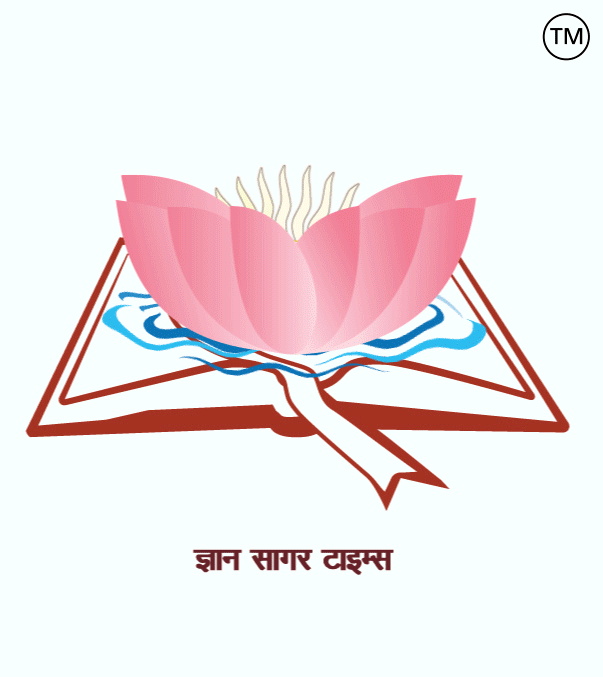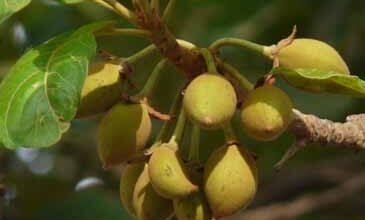
शर्मिला पौधा है लाजवंती
पौधों का हमारे जीवन में अहम् भूमिका होती है, ये कई विविधताओं से भरे होते हैं. कुछ पौधे बहुत छोटे होते हैं तो कुछ बड़े, कुछ प्रकाश उत्पन्न करते हैं तो कुछ पानी से भरे हुए होते हैं… कई पौधों में सुंदर फूल उगते हैं और कई रसीले फल देने वाले होते हैं. इसके अलावा कई पौधे तो ऐसे होते हैं जिनमें सिर्फ कांटे ही उगते हैं, इन्हें हम कैक्टस के नाम से जानते है. एक पौधा ऐसा है जिसमें लाज-शर्म जैसा मानवीय गुण भी देखें जा सकते है, वैज्ञानिकों के अनुसार लाजवंती या छुई-मुई के पौधे में की पत्तियां कई कोशिकाओं से बनी होती हैं जिनमें द्रव भरा रहता है. इसे लाजवंती का पौधा कहते हैं. इस पौधे का बॉटनिकल नाम ‘मिमोसा प्यूडिका’ है. हमारे हाथ लगाते ही यह पौधा शर्माकर सिकुड़ जाता है जिसे देखना बहुत ही मनोरंजक व आनंददायक होता है.
लाजवंती का पौधा इंसानों के हाथ लगाने से ही नहीं बल्कि किसी भी बाहरी चीज के स्पर्श से भी सिकुड़ जाता है, इसीलिए इसे ‘छुई-मुई’ का पौधा भी कहा जाता है. छूते ही सिकुड़ने की अपनी प्रकृति के चलते यह पौधा जानवरों के खाने से भी बचा रहता है, जैसे ही कोई जानवर इसे खाने की कोशिश करता है इसकी पत्तियां सिकुड़ कर सूखी पत्तियों जैसी हो जाती हैं जिससे जानवर इसे बेजान पौधा समझकर छोड़ देते हैं.
लाजवंती या छुई-मुई पौधा अत्यंत संवेदनशील होता है. वैज्ञानिकों का कहना है कि इस पौधे की पत्तियां कई कोशिकाओं से बनी होती हैं जिनमें द्रव भरा रहता है, कोशिकाओं का यही द्रव इसकी पत्तियों के खड़े रख पाने में भी मदद करता है. हमारे या किसी अन्य जीव के अथवा बारिश के पानी या तेज हवा के चलने पर इस पौधे में भरे द्रव का दवाब कम हो जाता है, और इसी कारण से इसकी पत्तियां सिकुड़ जाती हैं.
यह पौधा मुख्य रूप से भारत के गर्म प्रदेशों में पाया जाता है. इस पौधे को ‘टच मी नॉट’ प्लांट भी कहा जाता है. बारिश के मौसम में इस पौधे में बैंगनी, गुलाबी व नीले रंग के पुष्प खिलते हैं. अपने शर्माने या लजाने के स्वभाव के अलावा इस पौधे में कई औषधीय गुणों के लिए भी जाना जाता है. इसकी पत्तियों में एंटीवायरल व एंटीफंगल गुण पाए जाते हैं. मधुमेह, पेट के रोगों, टॉन्सिल्स, नेत्र रोगों, शारीरिक कमजोरी तथा हड्डियों की दुर्बलता दूर करने में यह पौधा उपयोगी होता है. आयुर्वेदिक ग्रन्थों के अनुसार, लाजवंती प्रकृति से ठंडे तासीर की और कड़वी होती है. सिर्फ पत्तियां ही नहीं बल्कि इस पौधे की जड़े पुष्प तथा बीज भी रोगों के उपचार में काम आती हैं.
लाजवंती के पौधे के फायदे…
- 10-20 मिली लाजवंती के पत्ते के रस को नियमपूर्वक पिलाने से गंडमाला में लाभ होता है.
- अगर आप खांसी से परेशान रहते हैं तो आपको लाजवंती की जड़ को गले में बांधे. इससे आपको राहत मिलेगी.
- अपच दूर करने में भी लाजवंती काफी फायदेमंद होता है. 5-10 मिली लाजवंती पत्ते के रस को पिलाने से अपच के कारण बुखार, कामला या पीलिया व सभी प्रकार के पित्त संबंधी रोगों में लाभ होता है.
- अगर आप बवासीर (पाइल्स) से परेशान हैं और आपको शौच के दौरान रक्तस्राव होने लगता है तो आपके लिए लाजवंती का उपयोग आपके लिए फ़ायदेमंद हो सकता है. आप प्रतिदिन एक चम्मच लाजवंती पत्ते के चूर्ण को दूध के साथ सुबह शाम अथवा तीन बार देने से बवासीर में लाभ होता है.
- अत्यधिक मात्रा में मूत्र होने की समस्या होने पर आप लाजवंती के पत्तों को जल में पीसकर लेप लगाने से आराम मिलता है.
- अक्सर उम्र बढ़ने के साथ स्तनों के ढीलेपन की समस्या होने लगती है, लेकिन लाजवंती का उपयोग इस तरह से करने पर लाभ मिलता है. इसके साथ ही हाइड्रोसिल,साइनस और अल्सर में भी लाभ मिलता है.
========== ========= ===========
Lajwanti is a shy plant

Plants play an important role in our life, they are full of many diversities. Some plants are very small and some are big, some produce light and some are filled with water… Many plants grow beautiful flowers and many bear juicy fruits. Apart from this, there are many plants in which only thorns grow, we know them as cactus. There is a plant in which human qualities like shyness can also be seen, it is called the Lajwanti plant. The botanical name of this plant is ‘Mimosa pudica’. This plant shrinks in shyness as soon as we touch it, which is very entertaining and enjoyable to watch.
The Lajwanti plant shrinks not only by human touch but also by the touch of any external thing, that is why it is also called the ‘Mimosa pudica’ plant. Due to its nature of shrinking while being touched, this plant also remains safe from being eaten by animals. As soon as any animal tries to eat it, its leaves shrink and become dry leaves, due to which the animals consider it a lifeless plant and leave it.
The Lajwanti or Mimosa plant is very sensitive. Scientists say that the leaves of this plant are made up of many cells filled with fluid; this fluid of the cells also helps keep its leaves standing. When we or any other creature or rainwater or a strong wind blows, the pressure of the fluid-filled in this plant decreases, and due to this, its leaves shrink.
This plant is mainly found in the hot regions of India. This plant is also called the ‘Touch Me Not’ plant. Purple, pink, and blue flowers bloom in this plant during the rainy season. Apart from its shy nature, this plant is also known for many medicinal properties. Antiviral and antifungal properties are found in its leaves. This plant is useful in curing diabetes, stomach diseases, tonsils, eye diseases, physical weakness, and bone weakness. According to Ayurvedic texts, Lajwanti is cold in nature and bitter. Not only the leaves but also the roots, flowers, and seeds of this plant are useful in the treatment of diseases.
Benefits of Lajwanti plant…
- Regularly drinking 10-20 ml of Lajwanti leaf juice is beneficial for goiter.
- If you are troubled by a cough, then tie the root of Lajwanti around your neck. This will give you relief.
- Lajwanti is also very beneficial in curing indigestion. Drinking 5-10 ml of Lajwanti leaf juice is beneficial in fever, jaundice, and all types of bile-related diseases due to indigestion.
- If you are suffering from piles and you start bleeding during defecation, then the use of Lajwanti can be beneficial for you. Taking one spoonful of Lajwanti leaf powder with milk every day in the morning and evening or three times a day is beneficial in piles.
- If there is a problem of excessive urination, then grinding Lajwanti leaves in water and applying a paste gives relief.
- Often with increasing age, the problem of sagging of breasts starts, but using Lajwanti in this way is beneficial. Along with this, it is also beneficial in hydroceles, sinuses, and ulcers.





